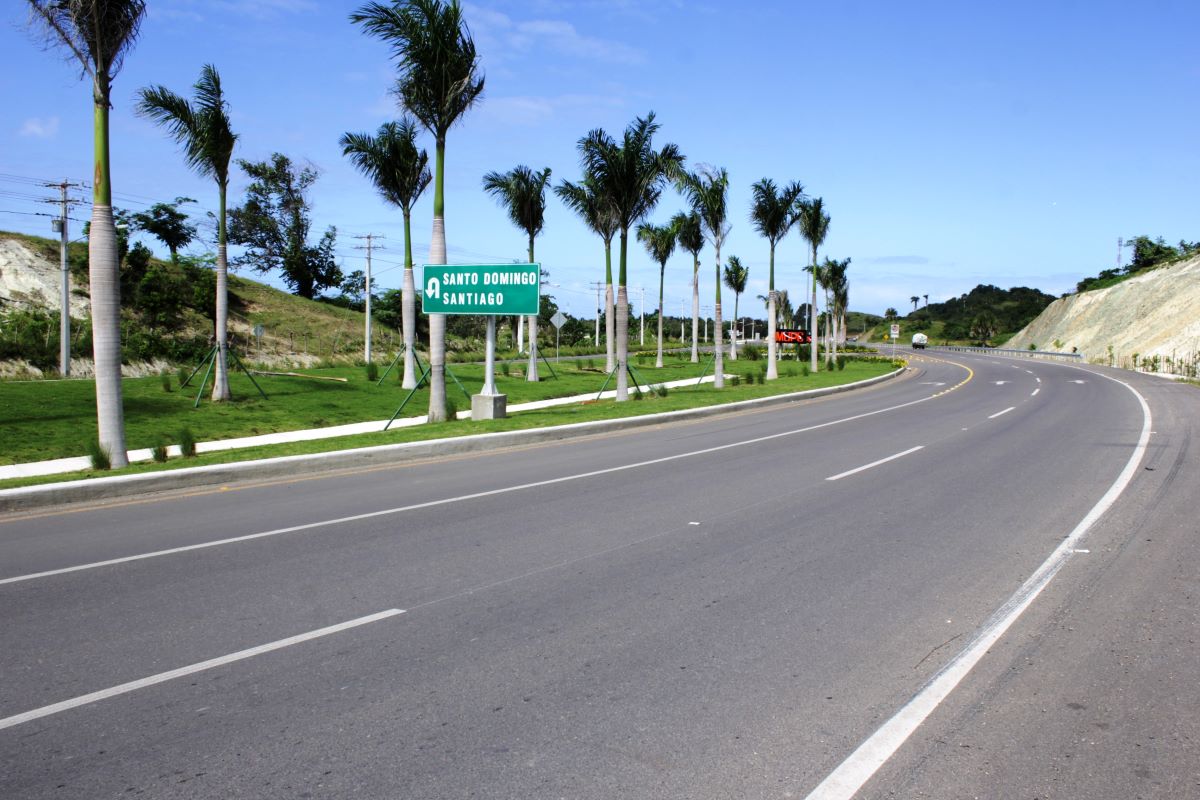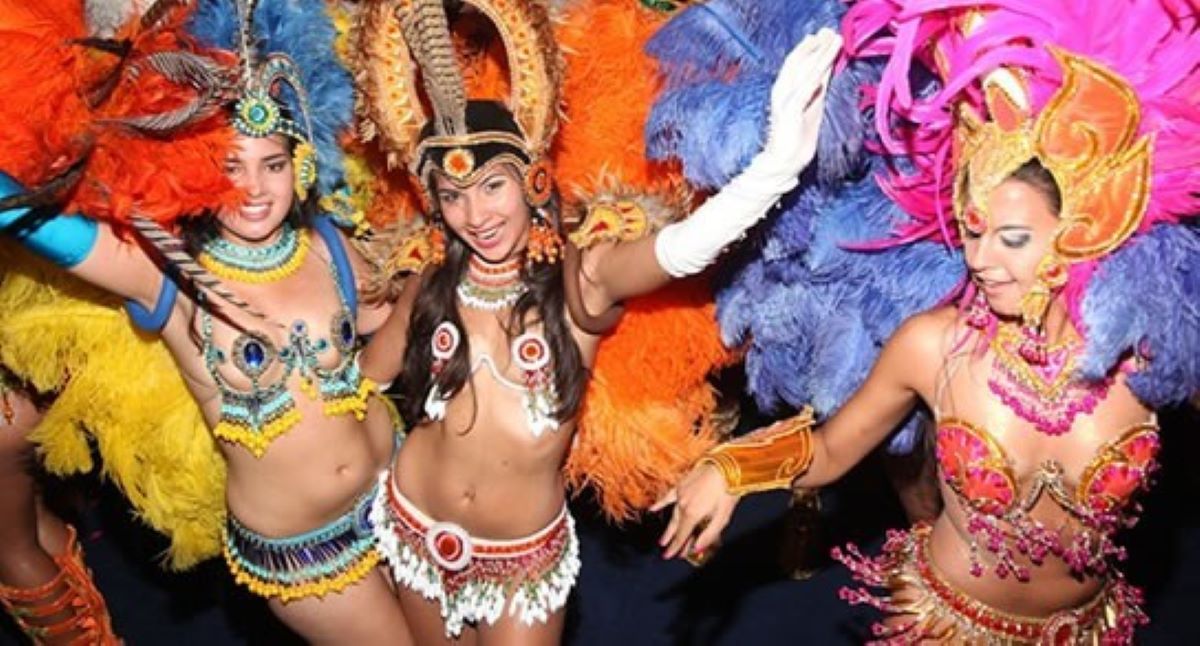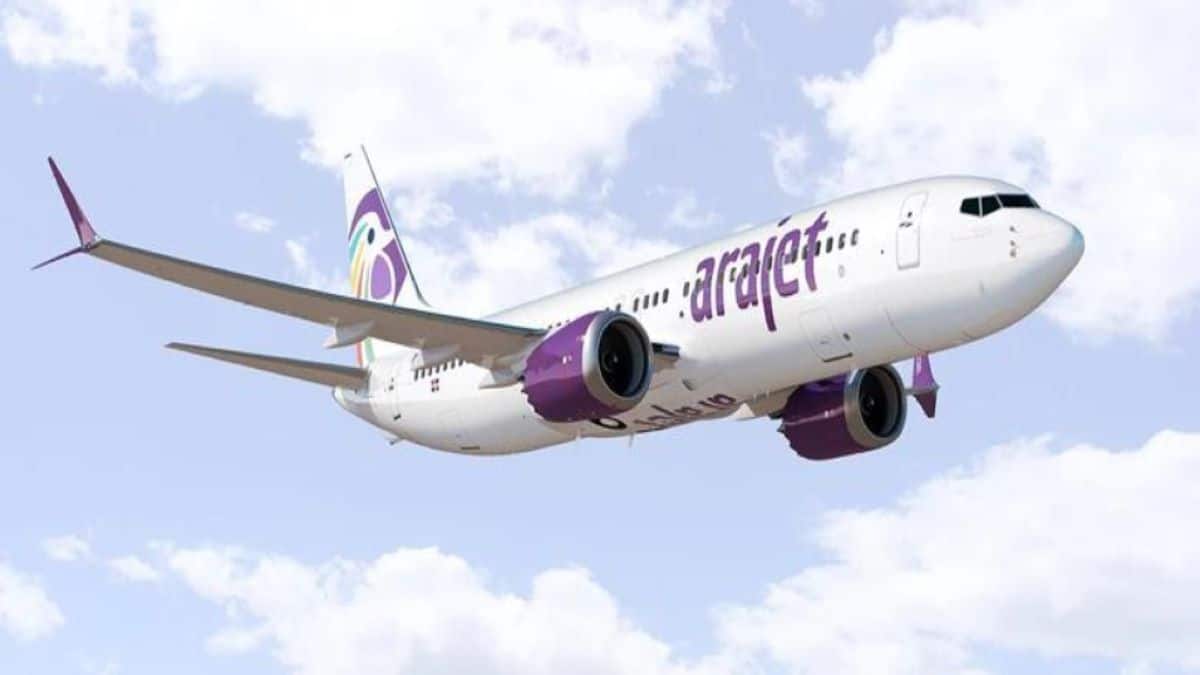Dominican Republic Tourist Entry and Travellers Guide
Dominican Republic Tourist Entry and Travellers Guide
Dominican Republic (DR) Frequently Asked Questions

Do I need a passport and/or visa to enter into the DR?
All foreigners who enter the DR need a valid passport with at least 6 months remaining on the date of departure.
Most visitors arriving by air to the Dominican Republic, including those from the US, Canada, Great Britain, the European Union, Mexico, and many South American countries only need a valid passport and the bundled tourist card to enter the country.

Those obtaining citizenship from elsewhere will need to apply for a tourist visa.
Do visitors have to pay a tourist fee when entering or departing from the DR?
International tourists arriving by air to Dominican Republic will no longer be required to pay the US $10 tourist entry fee upon arrival. Effective April 25, all airfare purchases will include the tourist card fee.
The Tourist Card permits a 30-day stay.
All tourists will be required to fill in an electronic E ticket for arrival and departure SEE THIS LINK
Contact the Migration Department in Santo Domingo for visa extension requests. Failure to request an extension will result in a fine at the airport upon departure. The fines range from approximately $55 USD for one month to as high as $1,555 USD for overstays of 10 years or more.
Dominican Republic Tourist Entry and Travellers Guide
What is the policy for traveling with underage minors of Dominican nationality?
When an underage child is traveling with both parents, there is no problem and no special permit is required. But, if the child is traveling with one of the parents, then they must have authorization from the other parent.
Any authorization or permit to leave the country for a child should be carried out by means of a private writ, duly legalized by a public notary, stamped by the Dominican Attorney General’s office, which should then be lodged with the Department of Immigration, where the exit permit will be issued following payment for the service.
What is the year-round weather like in the DR?
Every day is a beautiful day in the Dominican Republic (DR). The country is blessed with year-round summer-like weather with mostly sunny days and clear blue skies. The average high for the DR is 87 F (30.55 C), with an average low of 73 F (22.77 C) degrees.
The DR’s winter season runs from November through April, with relatively low humidity.
The summer season in the DR begins in May and runs through October, with a higher humidity, which can make it seem much hotter than it actually is.
Regardless of the season, nearly 1,000 miles (1,609 km) of DR coastline receive cooling tropical breezes while the Cordillera Central mountain region, including the towns of Jarabacoa and Constanza, offers an average temperature of 61 F (16.11 C) degrees.
Nearby deserts in the southwest region experience higher average temperatures.
DR average temperatures throughout the year:
Dominican Republic Tourist Entry and Travellers Guide

What currency is used in the DR and what is the exchange rate between it and the U.S. dollar?
The Dominican peso (RD$) is the official currency of the DR. For the past several years, the exchange rate has been very favorable to the U.S. dollar so vacation budgets stretch further in the DR. For an up-to-date exchange rate between the Dominican peso and other currencies, visit: http://www.xe.com/currencyconverter/
Major credit cards and traveler checks are accepted at many tourist areas in the country.
Visitors can bring Dominican pesos with them, but U.S. dollars are just as easily accepted throughout the country. (U.S. coins are not used or accepted.) ATMs can be found in the majority of Dominican cities and at most resorts.
Dominican Republic Tourist Entry and Travellers Guide
Is it best to change money at the airport?
Unless you need to pay for a taxi, we recommend that you change your money at your destination city, as there is greater competition and because of this they offer a better exchange rate than at the airport. But the difference is nominal, therefore if you are not exchanging large amounts Banks are as good as any, but you may have to que.
Dominican Republic Tourist Entry and Travellers Guide
Are major credit card accepted? Are ATM machines available?
Most hotels, restaurants and businesses accept major credit cards. Visitors should be careful where and when they use their credit cards, to stay clear of double billings or additional charges. ATM machines are common and can be found around the country and many times are located within the resorts, but visitors should bring some cash to be sure.
What is the drinking age in the DR?
The drinking age in the DR is 18 years old this is also the legal age to have sex!
Are Drugs legal in the DR?
Drug use in the DR is 100% illegal there are very harsh penalties of prison terms for any one caught using drugs or trying to smuggle drugs into the country.
Is the water safe to drink?
While the water in most hotels in the DR is potable, travelers are still advised to drink bottled water as a precaution.
Bottled water is widely available throughout the country and because of the strength of the Caribbean sun, it is recommended that visitors drink at least 10 glasses a day to avoid dehydration.
What language is primarily spoken in the DR?
Spanish is the official language of the DR, however most employees in hotels and restaurants speak good English. If you intend to venture out beyond the tourist destinations, it might be helpful to know a few basic Spanish phrases.
Can I use electrical appliances from North America in the DR?
Electricity in the DR operates at 110 Volts/60 Hertz and appliances from North America should work in the DR without adapters. However, because voltage irregularities are common in the country, it is important any appliances or computers in use have surge protection. In addition, electrical appliances from Europe and other countries will need adaptors and energy converters.
Dominican Republic Tourist Entry and Travellers Guide
Does the DR practice tipping?
It is a mandatory 10% charge on all restaurant bills this is the service charge and goes to the staff, however if you feel that you were delivered a good service then another 5% to 10% is always appreciated.
It is also customary to tip people who carry out services such as filling up your car, packing your bags in a supermarket and fetching and carrying for you!
How old do you have to be to rent a car in the DR?
Visitors who are 21 or older can rent a car in the DR with a valid driver’s license.
In fact, most of the popular rental agencies in North America and Europe have offices in the DR.
When dialing from the U.S. to the DR, or vice versa, what international dial code is used?
To call from the U.S. to the DR, dial “1” plus the local number. To call the U.S. from the DR, dial “1” plus the local number. To call Europe and South America from the DR, visitors need to dial “011” along with the area code and phone number.
Can I use my cell phone in the DR without international coverage?
Most cellular companies offer service within the DR. Telephones are also widely available at resorts throughout the DR. To call the U.S., Canada and Mexico from the DR, visitors need to dial an area code and phone number as they would at home.
If you have a GSM cell phone, this should work in the DR. You only have to activate it in the Dominican Republic. If not, it will work with roaming and the tariff varies according to your mobile company.
The other option is to get a telephone in the DR with a local number at any of the many telephone points such as Claro-Codetel, Orange, Tricom or Viva, paying approximately US$40 and then buying phone cards.
Please Note as of June 2014 all phones purchased have to be registered so you will need your passport and a local address.
Dominican Republic Tourist Entry and Travellers Guide
What time zone does the DR follow?
The Dominican Republic observes Atlantic Standard Time (UTC−4) year-round

Are there pet regulations in the DR?
The Department of Animal Health requires specific documentation for any pets being brought into the country.
Cats and dogs must have the following documentation:
A health certificate issued by the Office of Animal Health no more than 15 days prior to the arrival date of the animal is required.
Anti-rabies vaccine, triple vaccine (distemper, leptospirosis, hepatitis) and Parvovirus vaccine certificates showing inoculations 15 days prior to the arrival date of the animal is required.
Pets that don’t meet requirements will be quarantined for at least eight days and up to a month. For all other types of animals, special authorization should be sought from and issued by la Dirección General de Ganaderia (Department of Animal Husbandry), (809)-535-9689.
Is car hire essential?
There are some tourist destinations where hiring a car is recommended because there is so much to see.
For example, if you are traveling the northern coast of the country from Montecristi through Puerto Plata to Cabrera, or to the beaches of Samaná and Las Terrenas hiring a car will ensure you can stop and see the sights along the way.
Hiring a car along the eastern coastal area is also recommended as the popular tourist areas can be explored, including La Romana, Bávaro, Cap Cana and Punta Cana.
The eco-pristine southwest part of the Dominican Republic is one of the most beautiful and untouched areas. Hiring a car will help visitors see the stunning beauty and nature in Barahona, Pedernales and its great attractions of Bahia de las Águilas (Bay of Eagles) and the Hoyo de Pelempito (Pelempito Hole).
All these destinations are surrounded by beaches and attractions that may be easier to visit if you have a car available.
Dominican Republic Tourist Entry and Travellers Guide
Public Transportation
The Dominican Republic’s public transportation system is surprisingly modern and extensive. Dominicans are constantly on the road–visiting family in the countryside, conducting business, or shuffling to school. Taxis are ubiquitous, Uber is available in three major cities–Santo Domingo, Santiago, and Puerto Plata–and there’s always a form of bus service, big or small, going to any town or city you want to explore. Aside from being the most affordable way to travel, public transportation is a great way to glimpse everyday life in the DR, and is guaranteed to be a memorable experience.
Santo Domingo Subway

Metro Santo Domingo operates two lines, mostly used by residents commuting to work. But there are a couple of stops convenient to sights. Line 1 runs north to south along Máximo Gómez Avenue, from the Villa Mella area all the way to Centro de los Héroes, where Congress, the Supreme Court of Justice, and the Department of Migration, among other government offices, are located. The Casandra Damirón stop on Line 1 lands you directly into Plaza de la Cultura, home to key museums and the National Theater. Line 2 runs east to west on John F. Kennedy Avenue, passing by Ágora Mall at the Pedro Mir stop, and the Felix Sánchez Olympic Stadium. A roundtrip subway fare costs RD$15 for a rechargeable metro card, plus RD$40 roundtrip, or RD$80 for a day-pass. The subway operates daily from 6am-10:30pm.
Taxis

Taxis are easily located in major cities and towns, usually stationed outside major bus stations, or hotel and tourist zones. In the big cities like Santo Domingo, Santiago, and Puerto Plata, your best bet is to call one of the major 24-hour taxi service companies–ask your hotel or a local for the best ones, and to make the call for you. When calling, ask the taxi phone operator to confirm the color of the car, and the estimated wait time. You should also ask for confirmation of the fare to your destination –rates within cities are set by the taxi association.
Dominican Republic Tourist Entry and Travellers Guide
Uber & Cabify
The popular ridesharing app service UBER launched in the Dominican Republic in 2015, and is now operating in three major cities: Santo Domingo, Santiago, and Puerto Plata. Cabify also operates in Santo Domingo. These apps are as safe to use in the DR as in any other destination. More visitors are resorting to them because of the language barrier–no need to speak to a taxi operator on the phone. The cars are also usually in better condition, with working seatbelts and air-conditioning, in addition to reduced fares when there is no heavy traffic.
Long Distance Local Travel
Interurban Coach Bus Service
One of the major perks of the DR is the convenient, affordable large coach bus services connecting the major regions in the country. There are three reliable companies providing daily service to major hubs, in modern, air-conditioned buses with Wi-Fi and movies. Metro Tours buses connect Santo Domingo, Santiago, Puerto Plata, Sosúa, La Romana/Casa de Campo, and there are daily departures to Port-au-Prince, Haiti. Caribe Tours serves Santo Domingo, Santiago, Puerto Plata, Sosúa –with more frequent daily departures–Barahona, Cabrera, Jarabacoa, La Vega, Montecristi, Samaná, and other towns in the Dominican Republic, as well as Haiti. Expreso Bávaro is the only major bus service connecting Santo Domingo and Bávaro every day, ideal for Punta Cana travelers.
Bus fares range between RD$200-RD$500 one-way. Make sure to arrive at least one hour prior to departure to ensure seating space, and bring a solid jacket or scarf with you on board, as these buses tend to keep the air-conditioning at its lowest point.
Dominican Republic Tourist Entry and Travellers Guide
Low-cost Minivan Bus Service or Guaguas
Smaller, privately-owned and operated minivan buses called guaguas travel scheduled routes daily, taking travelers within a city, or long-distance to small and large destinations around the Dominican Republic.
The long-distance guaguas are just as comfortable as the large coach buses, seating no more than 20-25 passengers, each with a dedicated seat and offering Wi-Fi connection. Look out for the ones labeled “Expreso” to your destination–they don’t stop along the road to pick up passengers, unlike the regular ones, which shortens your trip.
In-City Transportation
Minivan Buses
The inner-city guaguas tend to be white vans, stopping to pick up or drop off anyone along the designated route as many times as it takes, and are the slowest form of getting around. Passengers are crammed in, and space appears magically just when you think there isn’t any left. It’s also the cheapest way to travel within a city or town limits. Be sure to carry small change for the fare, as these vans don’t carry much cash–you could be stuck paying more otherwise. Each guagua has a driver, and a conductor who calls out for passengers along the road, handles collecting fares, and hollers out requested stops to the driver. Inform the conductor of your destination as soon as you board, and prepare to pay right away or as soon as requested.
Motorbike Taxis Or Motoconchos
Motorbike taxis are popular among locals in the big cities like Santo Domingo or Puerto Plata, and even Jarabacoa, because they are the cheapest and fastest way to get past traffic. But this is also the most dangerous way to travel, particularly in cities or areas of heavy traffic. Many motorbike taxis don’t provide helmets, though they are legally required to do so. Riding a slow bike taxi in the mountain towns of Jarabacoa and Constanza, however, is a great way to take in the spectacular scenery. The official motorbike taxis usually wear a vest of neon color, but note that it is not always the case. Ask for the motoconcho hub in your town, or get a referral from your guesthouse. Fares range from RD$25 to RD$75 in-city, depending on the distance.
Shared Taxis or Conchos
Also known as carrito–conchos, carritos, or just conchos, these four-door sedans are shared taxis, similar to the in-city guaguas because they travel specific routes and stop anywhere on the route as requested by passengers. You can find them in the big cities, as well as in towns and villages. They are a slightly more comfortable method than the guagua, but passengers are also crammed in at the back and the front. Fares range from RD$25-50 depending on the distance–significantly cheaper than a private taxi fare, which start at RD$150.
Dominican Republic Tourist Entry and Travellers Guide
Highways

The Dominican Republic is well served by vast, modern highways connecting its major cities and coastlines, and linking the most popular tourist destinations. In good condition, they reveal the country’s glorious scenery, particularly along the highways from Santo Domingo to the Samaná Peninsula or Jarabacoa, and along the coast of Puerto Plata.
Familiarize yourself with these five major highways–particularly if you plan on renting a car and exploring the country’s multiple regions. Expect tolls, depending on your origin and destination–inquire at your guesthouse before launching your trip. For instance, the highway from Santo Domingo to Boca Chica bears a single tollbooth, while there are four from Santo Domingo to Bávaro. Toll fees vary, ranging from RD$60 to RD$100 per booth. Carry small change in Dominican pesos. Dollars are accepted, but any applicable change will be in the local currency.
Route 1: Autopista Duarte – Santo Domingo to Santiago: The Duarte Highway is a divided four-lane highway linking the north and south of the Dominican Republic. It’s a two-hour scenic drive from the capital up to the second largest city of Santiago, also leading towards Jarabacoa and La Vega.
Route 3: Autopista Las Américas: This highway links Santo Domingo’s Las Américas International Airport with the city of Santo Domingo going west, or to the beach town of Boca Chica going east. It eventually meets with the Autopista Coral towards La Romana.
Route 3: Autopista Oscar de la Renta: This highway, also known as Autopista del Coral, links Santo Domingo with the Punta Cana resort area, bypassing Higüey, in less than three hours, and reaches La Romana in less than one hour.
Route 5: Carretera de Puerto Plata: This two-lane highway runs along the North Coast in one of the most colorful, quaint drives in the country. It goes past fishing villages, beaches, distant verdant hills, and every day campo life.
Route 7: Santo Domingo to Samaná Highway: Route 7 links Santo Domingo with the northeastern Samaná Peninsula. The views on Route 7 are unparalleled, with dense coconut tree-punctuated hills from a coconut oil plantation, towering over a bright blue sea. An additional option is to reach Las Terrenas via the Boulevard Turístico del Atlántico or Route 133, worth the additional US$11 in toll fees for its breathtaking, winding coastal views, and a panoramic lookout stop over the Bay of Cosón.
Dominican Republic Tourist Entry and Travellers Guide
Car Rentals
All the major car rental companies are present in the Dominican Republic, located at international airports, as well as in-city. For the best rates, book online ahead of time on travel sites.
Renting a car is useful if you’re staying in one particular region–such as Puerto Plata, Punta Cana, Samaná, or Barahona–to better explore the long coastline. In-city rentals are also available; stick to well-known brands or ask your hotel for referrals. Pick a four-wheel drive for added safety, and make sure you have a good country roadmap on hand. Investing in a reputable travel guidebook is a solid investment as well, and learning a few key Spanish phrases.
To be eligible to rent a vehicle, you must:
- Be 25 years of age; and
- Bring a valid drivers’ license from your home country.
Go for full insurance coverage, including the Casa del Conductor option, which ensures you are not immediately sent to jail in case of a serious accident injuring another party. Cars are often rented with a full tank, and must be returned as such.
Domestic Flights
Getting around the DR by charter flight is a possibility to quickly reach the various regions. The domestic airports listed below are used for charters or for limited scheduled flights between the DR’s major tourist hubs: Santo Domingo, Samaná, Punta Cana, Puerto Plata, and Barahona. Charter flight companies include Air Century, SAP Group, TAS Jet, and Aerolíneas Mas.
La Isabela International Airport (JBQ)–also known as Aeropuerto Higüero–services domestic commercial and charter flights, including daily departures to Haiti and Cuba.
Arroyo Barril International Airport (MDAB), located in Samaná, services domestic flights coming from Punta Cana.
María Montez International Airport (BRX) sits right outside the city of Barahona, and serves primarily domestic flights.
Punta Cana International Airport (PUJ) services domestic charter flights, aside from international ones.
Dominican Republic Tourist Entry and Travellers Guide
Dominican food is unique and delicious.
Try the popular“Mangú” (green plantains, boiled and mashed) with eggs, fried cheese or salami for breakfast; rice, red kidney beans), meat and “tostones” (mashed and fried green plantains) at midday.
Also try pork rinds, “locrio de pollo” (rice with chicken, Dominican-style), shrimp stew, “mofongo” (plantain mash with fish or meat), fish with coconut, stewed crab and conch, roasted or stewed goat with boiled cassava and a “sancocho” (stew) accompanied by avocados for dinner. And of course, do not forget to try cassava bread and “queso de hoja”, a type of string cheese.
Delicious Dominican desserts include grated coconut, sweet beans, sour milk dessert, orange sweets, milk (papaya) desert and pineapple dessert, and guava and cashew paste in syrup. Natural tropical fruit juices include: passion fruit, guava, pineapple, orange, strawberry, mango, mandarin and papaya juice with milk.
Do not miss out on tasting sugar cane juice from the abundant fields in the country.
You should also sample Dominican coconut juice from the hundreds of coconut groves and forests in the country. Delight in Dominican coconut’s delicious pulp and refreshing milk.

Dominican Republic Tourist Entry and Travellers Guide

Is it the custom to address people with the polite or the familiar form of “you”?
Even though times are changing, it is better to err on the side of formal rather than informal and it is always preferable to use the formal form of “you” (usted) before you know someone.
Gentlemen can be referred to as “don” or “señor” (Mr.) and ladies as “doña” or “señora” (Mrs.). Informality is very common and acceptable because Dominicans are very open and sociable.
The term “amigo” (friend) is frequently used. And don’t be surprised if they refer to you as “mi amor” (my love) or “cariño” (dear), as some Dominicans go right to the limits of informality in their speaking.
How safe is it?
The Dominican Republic continues to be one of the countries with the lowest incidence of crime in the region. However, it is wise to always take precautions, just as you would if you were to visit any new country or large new city in the world.
I am coming as a tourist, what clothes should I bring?
The Dominican Republic is located in the Caribbean or tropics and features warm sunny weather year-round.
It is recommended that you bring light clothing for warmer weather. However, if you will be at a resort, make sure you bring something a bit more formal for occasions that may require a little more elegance, such as dining in upscale restaurants.
Also, if you are going on excursions on which there are visits to churches and some types of monuments or museums, you will not be able to enter if you are wearing shorts or very short skirts.
If your visit is in the winter, between December and February, you should bring a light coat or jacket, as at night the temperature tends to drop a little.
Dominican Republic Tourist Entry and Travellers Guide

DR International airports:
Santo Domingo:
Las Americas International Airport (SDQ), is 30 minutes from the capital and very close to the tourist areas of Boca Chica and Juan Dolio.
Joaquin Balaguer International Airport (SLI), also located in Santo Domingo and sometimes referred to as La Isabela, receives mostly domestic flights.
Punta Cana

Punta Cana International Airport (PUJ): only 10 minutes from the area of Punta Cana and Cap Cana, and some 30 minutes from Bávaro, El Cortecito, Arena Gorda, Macao and Uvero Alto.
Puerto Plata
Gregorio Luperón International Airport (POP) is only 20 minutes from the North Coast city of Puerto Plata. Nearby tourist destinations include Playa Dorada, Sosúa, Cabarete, Playa Grande and Cofresi.
La Romana
La Romana International Airport (LRM) is just 10 minutes from Casa de Campo Resort on the Southeast Coast and only 20 minutes from Bayahibe.
Samaná

El Catey International Airport (AZS) is only 30 minutes from the city of Samaná and 45 minutes to the destinations of Las Terrenas and Portillo on the famed Northeast coast of the Dominican Republic.
Santiago
El Cibao International Airport (STI) is 15 minutes from the bustling city of Santiago in the Central Region and provides easy access to nearby La Vega, Jarabacoa, Constanza, San Francisco de Macoris and Moca.
Barahona
María Montez (BRX) in Barahona and Cabo Rojo (CBJ) in Pedernales on the Southwest Coast.
DR National Airports:
Montecristi
The Montecristi Airport (MDMC) serves the Montecristi area along the DR’s Northwest Coast.
Cueva de las Maravillas
Named after a famous cave in the region, Cueva de las Maravillas (SPM) Airport serves the La Romana and Juan Dolio resort areas along the Southeast and Central Coasts.
Arroyo Barril
Arroyo Barril Airport (MDAB) also serves the Samaná Peninsula on Samaná Bay in the Northeast Coast.
Constanza

The new Constanza Airport (MDCZ) in the La Vega region of the DR serves Constanza and nearby areas in the Central Region.
Pedernales
Cabo Rojo Airport (MDCR) serves Cabo Rojo and also the Pedernales Province in the Southwest Region of the country.
Dominican Republic Tourist Entry and Travellers Guide
Ports for cruise ships:
There are three Dominican Republic ports for cruise ship arrivals:
The Port of Santo Domingo (which includes the brand new Don Diego and Sans Souci cruise terminals).
A new Cruise Ship Port and Marina at Casa de Campo Resort in La Romana.
Established facilities to receive passengers transported from cruise ships anchored near the Island of Catalina on the South Coast and Samaná Bay on the Northeast Coast.
There are also many private marinas including: Casa de Campo, Cap Cana Marina (now the largest Marina in the Caribbean), Punta Cana Resort Marina, Ocean World Marina (Puerto Plata) and Luperón Marina (Puerto Plata).
Dominican Republic Frequently Asked Questions
Thank you for reading our Dominican Republic Tourist Entry and Travellers Guide
